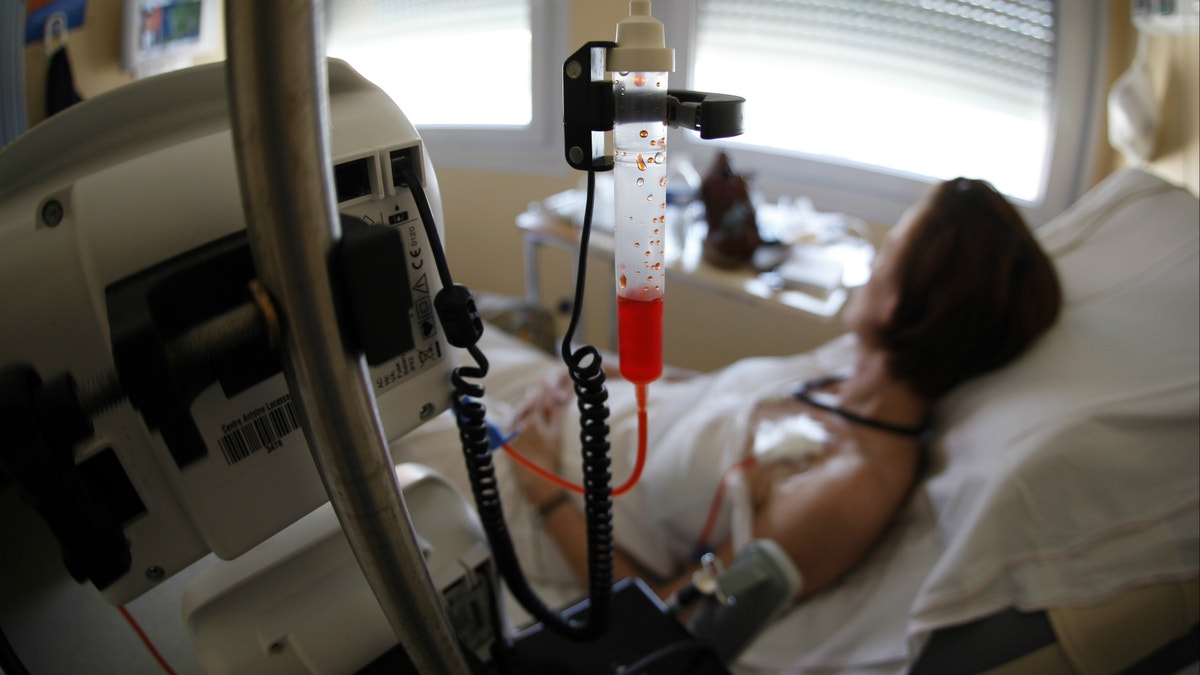
A patient receives chemotherapy treatment for breast cancer. (REUTERS/Eric Gaillard)
Information about the benefits and drawbacks patients experienced when taking a new cancer drug is rarely included on the product label, even though it could help doctors and patients make treatment choices, researchers say.
All prescription drugs in the U.S. come with labeling information, known as the package insert, that details how the medication works, how it should be used, data from clinical trials, and sometimes Patient Reported Outcome data from questionnaires or patient diaries kept during trials.
"It provides insight into the patient experience and allows us to understand how a drug impacts how a patient feels and functions," said Carla DeMuro, an author of the new study and head of Patient Reported Outcomes research at RTI Health Solutions in Research Triangle, North Carolina.
"This can be of particular interest to oncology patients and physicians who are trying to make decisions about quality of life, not just quantity of life," DeMuro told Reuters Health by email.
To see whether new cancer drugs come with patient-reported information on their package inserts, which are approved by the U.S. Food and Drug Administration (FDA), DeMuro and her colleagues looked at the labels of all cancer medications released in the U.S. between January 2010 and December 2014.
Over the five-year study period, 160 new drugs were approved by the FDA, 40 of them cancer drugs. Among the cancer drugs, just three, or 7.5 percent, included reports of patient experiences.
In comparison, the study team notes, an FDA review of new medications of all kinds approved in 2006-2010 found that 24 percent had patient reported outcome information.
The researchers also found that compared with drugs for other conditions, cancer drugs approved during the study period were more likely to be so-called orphan drugs, meaning they were developed for rare medical conditions.
They were also more likely to be first of their kind in a new class of medications, which may make it even more important for doctors and patients to understand how these drugs can affect patients, researchers note in the Journal of Clinical Oncology.
The majority of cancer drug reviews by the FDA were fast-track, priority or accelerated, meaning the drugs went through a faster approval process for medicines that treat serious conditions, fill in current treatment gaps and advance medical care.
Studies on 13 of the cancer drugs, or around one third, did look at patient reports during the study process, but did not include these results on the package labels.
The authors speculate that despite FDA rules encouraging the inclusion of patient experience reports in package insert information, other rules make it difficult to do. One obstacle is that most cancer drug trials are small and patients and doctors know who is receiving the drug, so there is a potential for bias in the results.
Second, the accelerated approval process may not leave time to make the gathering and analysis of patient experiences a priority.
"When we do not include this information in trials, publications, or labels, we have an incomplete picture of the impact of a drug on people's lives," said Dr. Ethan Basch, director of the Cancer Outcomes Research Program at UNC-Chapel Hill, in North Carolina.
"Moreover, future patients trying to decide whether to take a drug will have an incomplete understanding of how patients like them felt during that treatment," Basch, who was not involved in the study, said by email.
Dr. Paul Kleutz, associate director of Clinical Science at the FDA's oncology office, told Reuters Health that the FDA reviews all patient reports when considering the risks and benefits of new treatments, but cannot always include them because of agency regulations.
"We are actively working with multiple academic, patient and industry groups to further the field of patient-reported outcome measurement in oncology," Kleutz said by email.
All patients can benefit from hearing about other patients' reports, Basch said. Doctors can benefit as well, he said, adding, "when I sit down with a patient to discuss starting a new treatment, ideally I can explain to them how they might expect to feel with that treatment... But this information is currently missing in most drug labels."
SOURCE: bit.ly/1SaVcmg Journal of Clinical Oncology, online April 11, 2016.
